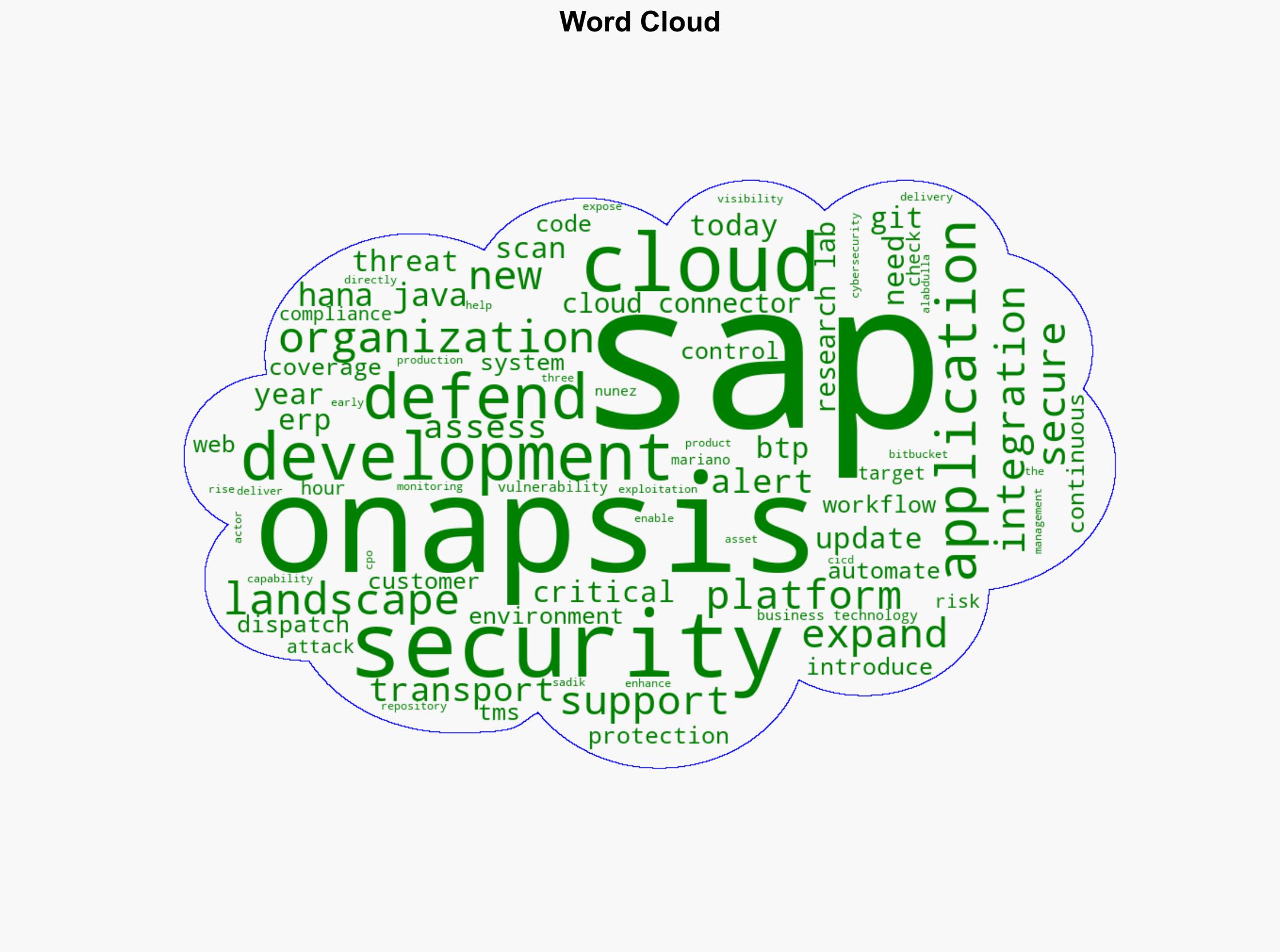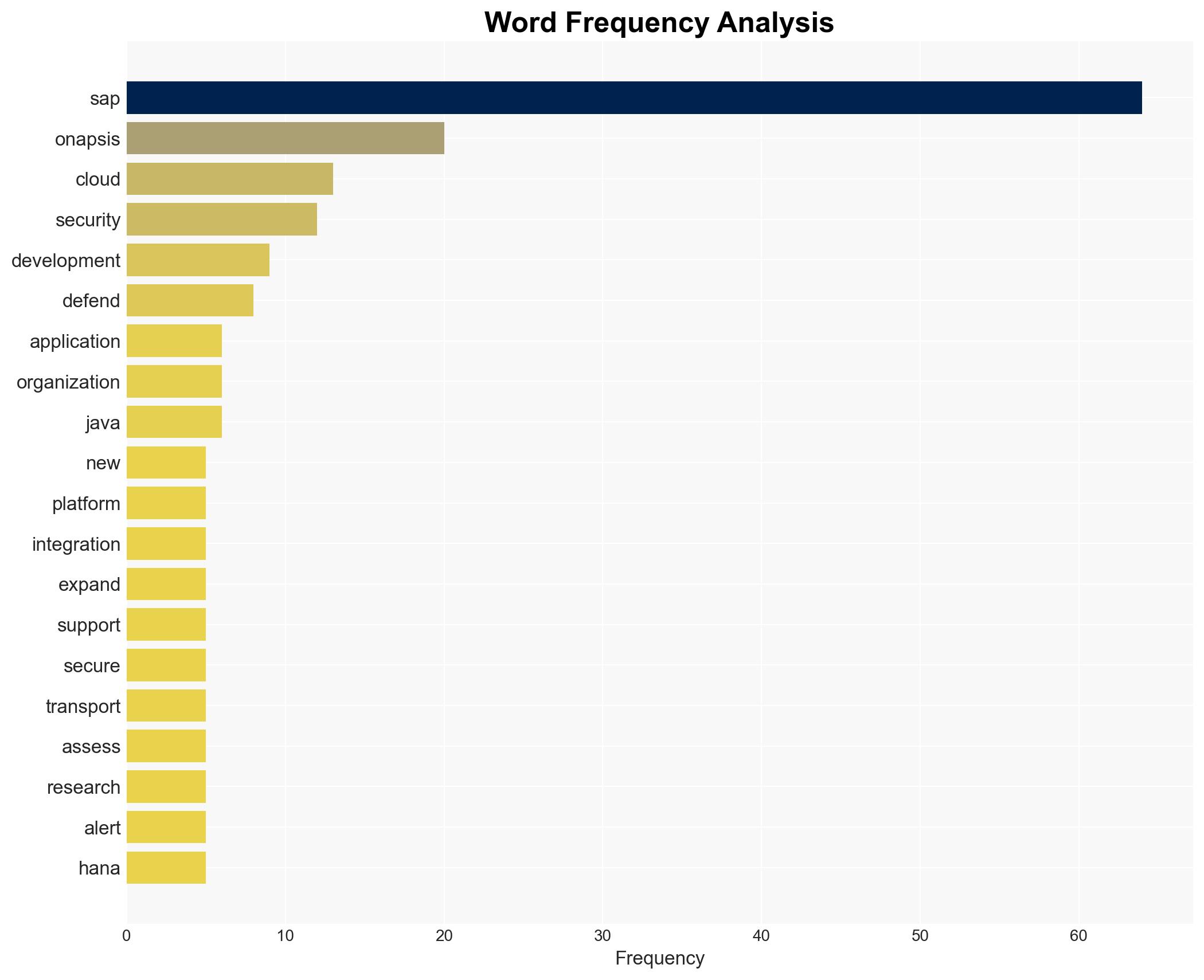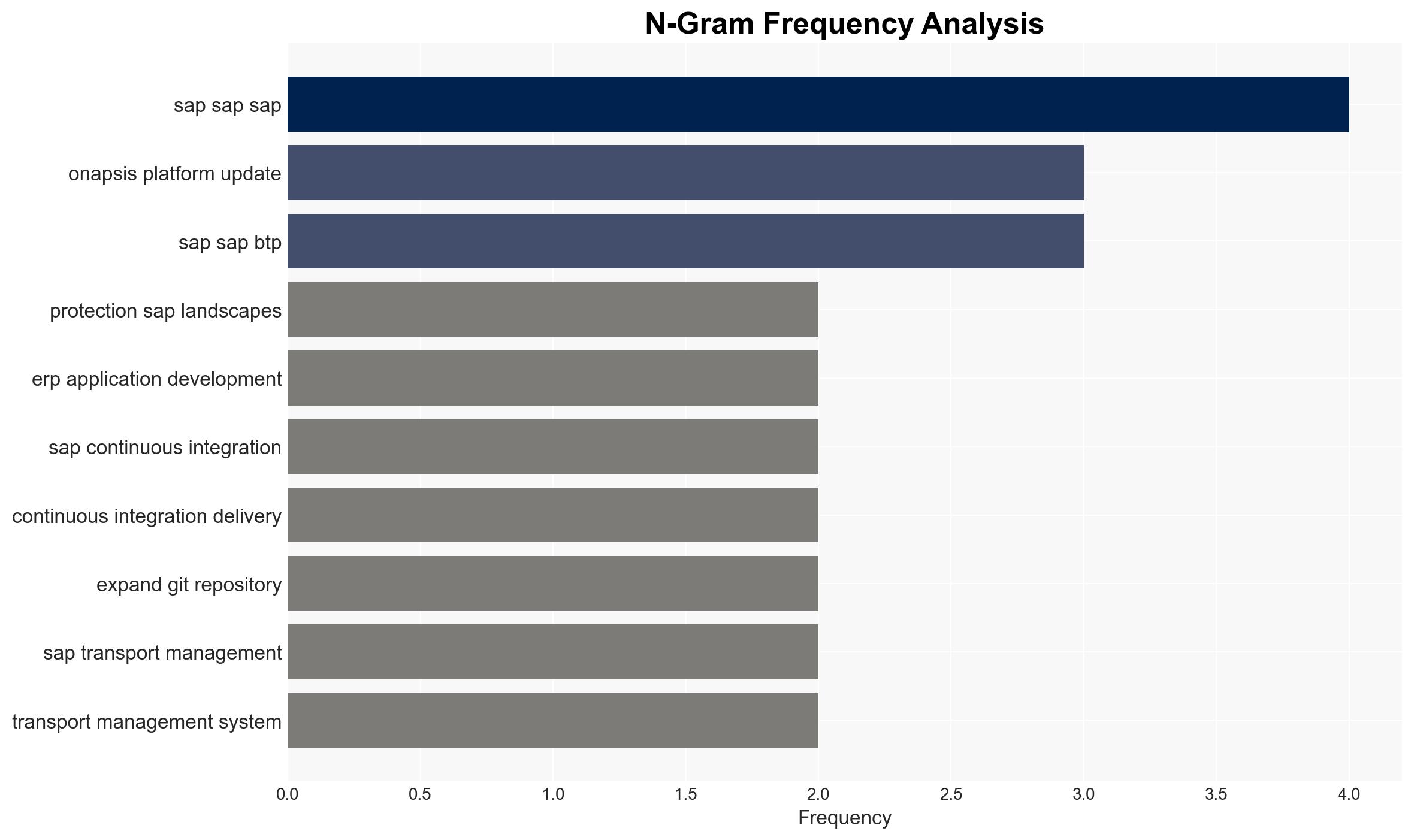New Onapsis platform updates enhance visibility and protection across SAP landscapes
Published on: 2025-11-21
AI-powered OSINT brief from verified open sources. Automated NLP signal extraction with human verification. See our Methodology and Why WorldWideWatchers.
Intelligence Report:
1. BLUF (Bottom Line Up Front)
The Onapsis platform updates significantly enhance cybersecurity capabilities for SAP landscapes, particularly in cloud environments. The most supported hypothesis is that these updates will reduce the risk of successful cyberattacks on SAP systems by improving automated security controls and integration into development workflows. Confidence level: Moderate. Recommended action: Organizations using SAP should prioritize integrating these updates to bolster their cybersecurity posture.
2. Competing Hypotheses
Hypothesis 1: The new Onapsis platform updates will significantly reduce the risk of cyberattacks on SAP systems by enhancing visibility and integrating security controls into development workflows.
Hypothesis 2: Despite the updates, the risk of cyberattacks on SAP systems will remain high due to sophisticated threat actors and potential gaps in implementation or user adoption.
Hypothesis 1 is more likely due to the comprehensive nature of the updates, which include integration with SAP’s CI/CD processes, expanded support for cloud environments, and enhanced automated security checks. However, the effectiveness of these updates depends on proper implementation and user adoption, which introduces some uncertainty.
3. Key Assumptions and Red Flags
Assumptions: It is assumed that organizations will effectively implement and utilize the new Onapsis updates. Additionally, it is assumed that the updates will be compatible with existing SAP systems without significant issues.
Red Flags: Potential resistance to change or lack of technical expertise within organizations could hinder the effective deployment of these updates. Additionally, the rapid evolution of cyber threats could outpace the updates’ capabilities.
4. Implications and Strategic Risks
The enhanced security capabilities could deter cybercriminals from targeting SAP systems, potentially reducing the frequency and impact of ransomware attacks. However, if threat actors adapt quickly, they may develop new tactics to exploit any remaining vulnerabilities. This could lead to increased pressure on organizations to continuously update and monitor their security measures, potentially escalating costs and resource allocation.
5. Recommendations and Outlook
- Organizations should prioritize the integration of Onapsis updates into their SAP systems to enhance security and compliance.
- Conduct regular training and awareness programs for staff to ensure effective use of the new security features.
- Establish a continuous monitoring and feedback loop to quickly identify and address any gaps in security coverage.
- Best-case scenario: The updates lead to a significant reduction in successful cyberattacks on SAP systems, enhancing overall security and operational resilience.
- Worst-case scenario: Threat actors quickly adapt, and organizations face increased costs and complexity in maintaining security, with limited reduction in attack frequency.
- Most-likely scenario: The updates provide a moderate improvement in security, reducing some risks but requiring ongoing vigilance and adaptation to evolving threats.
6. Key Individuals and Entities
Mariano Nunez, CEO of Onapsis, is a key figure advocating for proactive security measures in SAP environments.
7. Thematic Tags
Structured Analytic Techniques Applied
- Adversarial Threat Simulation: Model and simulate actions of cyber adversaries to anticipate vulnerabilities and improve resilience.
- Indicators Development: Detect and monitor behavioral or technical anomalies across systems for early threat detection.
- Bayesian Scenario Modeling: Quantify uncertainty and predict cyberattack pathways using probabilistic inference.
Explore more:
Cybersecurity Briefs ·
Daily Summary ·
Support us





